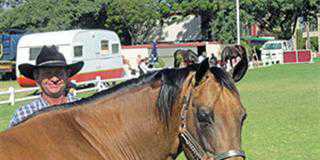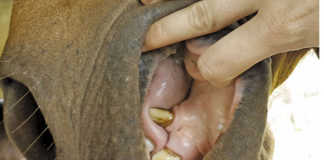Before you even consider taking your horses to a big show where they’ll be competing over several days, make sure your horse is fully vaccinated and fit enough to compete. It’s also important to know what you need to pack for the show.
Vaccines
All major shows now insist that horses are vaccinated twice a year for equine influenza and annually for African horse sickness (AHS). You can use a blue horse-passport or ask your vet for a vaccination certificate. If not vaccinated previously for equine influenza, your horse will need two vaccines, a month apart. The second one must be done at least 21 days before the show. The vaccine is renewed every six months.
AHS vaccination is done any time from September to late December. There are two separate vaccines, also injected at least 21 days apart. You may not show until 21 days after the second injection. However, to fit in with shows, if annual vaccines are up to date, you can do the first vaccination in September, wait 21 days, show your horses in October and November,
and do the second vaccination in the last week of November, or first week of December.
Fitness
Horses shown in halter or breed classes must be fit enough to go through their paces without puffing and blowing. Too much food and too little exercise can result in bad behaviour in the show ring as they’ll prance and rear instead of moving flawlessly and standing quietly when asked. Judges recognise the difference between fat – which ‘jiggles’ as the horse moves – and muscle – which gives a smooth, finished look to a top broodmare or stallion.
Some breeders virtually lock their show horses in stables for a month before a show – you’re more likely to win if you let them out for at least four hours a day to exercise themselves or to ride them. Even top equine athletes, like A Grade showjumpers need to be well-muscled and shiny and require a training programme to build up muscles and suppleness. Novice riders who buy top jumpers must keep them fit and supple at all times. An unfit horse can injure itself and its rider if taken over high jumps only at shows.
If you’re showing under saddle, make sure the horse can compete in the number of classes you’ve entered. Particularly in the Arabian classes, a good show horse can be under saddle for more than six hours a day for three to four days, doing nearly as much work as an endurance horse, often in heavy sand.
What to take
Always use the same bridle and saddle for training that you’ll use in the show ring. Clean and oil it regularly. Write a list so nothing is left behind. This will include buckets for feed and water, halter and blankets, travel bandages and tail protector, hay nets and grooming tools. Don’t change rations at the show, and pack enough feed. Always take a spade, scoop and broom, as you may find the stable full of manure when you get to the show. Clean stables rigorously before you put your horse into them, or you may take home unwelcome diseases or ticks.
Contact Dr Mac at [email protected]. Please state “Horse talk” in the subject line of your email.













